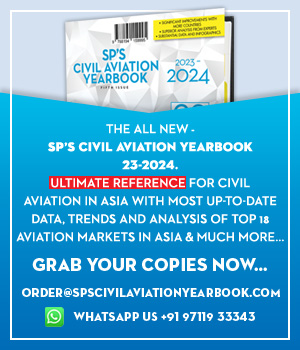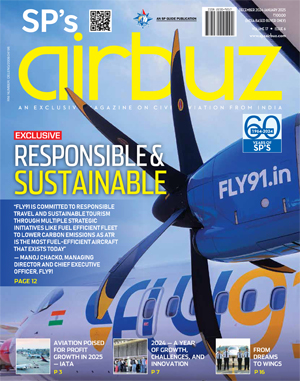From Dreams to Wings
India provides a diverse array of government and private pilot training institutes, offering aspiring aviators the opportunity to acquire exceptional flight training and pursue a rewarding career with abundant opportunities
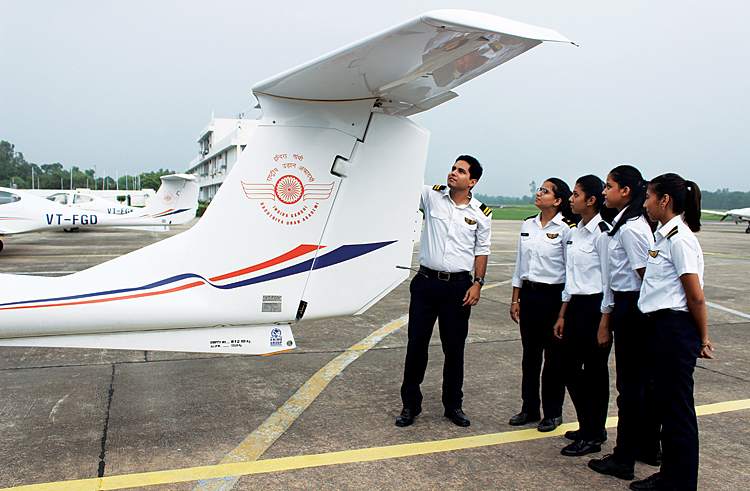
The aviation industry in India has witnessed phenomenal growth over the past few decades, creating a vibrant landscape for aspiring pilots. With an increasing number of airlines and a soaring demand for qualified pilots, selecting the best pilot training institute in India for you has become more crucial. India has several prestigious flight schools known for their quality training programmes and successful alumni. Below are some of the top pilot schools in India recognised for their excellence in aviation education.
INDIRA GANDHI RASHTRIYA URAN AKADEMI (IGRUA)
Established in 1985 in Amethi, Uttar Pradesh, the Indira Gandhi Rashtriya Uran Akademi (IGRUA) is India’s flagship institution for commercial pilot training. Operated under the Ministry of Civil Aviation, it was founded to address the aviation industry’s need for highly skilled pilots. IGRUA’s reputation is built on its rigorous training programmes, state-of-the-art infrastructure, and an experienced faculty composed of aviation experts. Its fleet includes modern aircraft such as the Diamond DA40/DA42 and Cessna 172, ensuring top-tier training. The flagship Commercial Pilot Licence (CPL) programme is complemented by multi-engine and instrument rating training. Known for maintaining quality, IGRUA remains a top choice for aspiring pilots in India and beyond.
NATIONAL FLYING TRAINING INSTITUTE (NFTI)
The National Flying Training Institute (NFTI), established in 2007, operates from Gondia Airport in Maharashtra as a joint venture between CAE Inc. and the Indira Gandhi Institute of Aeronautics. It aims to meet the growing demand for skilled pilots in India’s booming aviation sector. NFTI provides courses such as Commercial Pilot Licence (CPL), Private Pilot Licence (PPL), and typerating programmes, combining theoretical rigour with extensive flight practice. Equipped with Diamond DA40 and DA42 aircraft featuring advanced avionics, the academy offers cutting-edge training. NFTI’s reputation is bolstered by its placement records and its focus on delivering global-standard education, making it a preferred choice for pilot aspirants.
MADHYA PRADESH FLYING CLUB (MPFC)
Founded in 1951, Madhya Pradesh Flying Club (MPFC) is one of India’s oldest aviation training institutions, operating from Indore and Bhopal. Known for its legacy of excellence, MPFC offers a variety of programmes, including Commercial Pilot Licence (CPL) and Private Pilot Licence (PPL) training. Its fleet includes Cessna 172 and Piper Seneca aircraft, ideal for comprehensive pilot training. The institute’s faculty includes seasoned instructors, many of whom are retired Air Force and airline pilots. With state-of-the-art simulators and competitive pricing, MPFC provides a cost-effective yet high-quality education. MPFC alumni have secured positions with leading airlines, underscoring its reputation for delivering industry-ready professionals.
BOMBAY FLYING CLUB (BFC)
The Bombay Flying Club (BFC), established in 1928, is India’s oldest aviation training institution. Based in Mumbai, it is renowned for producing skilled pilots for both domestic and international airlines. BFC offers an array of courses, including Commercial Pilot Licence (CPL) and Private Pilot Licence (PPL) training, along with Flight Instructor Rating and Ground School programmes. It operates a fleet of modern aircraft such as the Cessna 152, Cessna 172, and Diamond DA40. Training takes place at the Juhu Aerodrome, complemented by cutting-edge simulators. BFC’s affordability, high standards, and legacy make it a premier choice for aspiring pilots.
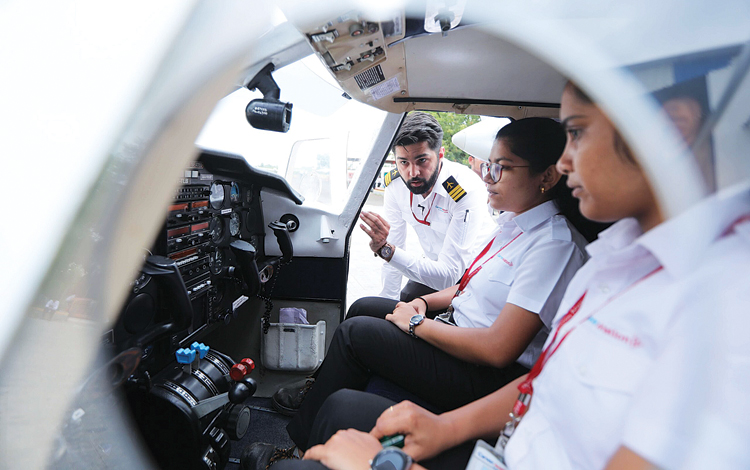
CHIMES AVIATION ACADEMY (CAA)
Established in 2008 in Dhana, Madhya Pradesh, Chimes Aviation Academy (CAA) is one of India’s leading pilot training institutions. CAA offers a range of courses, including the Commercial Pilot Licence (CPL), Multi-Engine Rating (MER), and Instrument Rating (IR), adhering to global standards. The academy’s fleet includes Cessna 172 and DA42 aircraft equipped with advanced avionics, providing practical training in modern flying technology. Experienced faculty, many of whom are former airline pilots, ensure rigorous training. Known for its competitive pricing and student-centric approach, CAA offers value-for-money education. Its strong placement record further solidifies its reputation as a top-tier aviation training institution.
ACADEMY OF CARVER AVIATION
Founded in 1995, the Academy of Carver Aviation (ACAPL) is a premier flight training school located in Baramati, Maharashtra. It offers courses such as Commercial Pilot Licence (CPL), Private Pilot Licence (PPL), and Aircraft Maintenance Engineering (AME). Carver Aviation’s modern fleet includes Cessna 172, Piper Seneca, and Diamond DA42 aircraft, all maintained to international standards. The academy provides advanced simulator training, ensuring hands-on learning experiences. With its well-qualified faculty and conducive training environment at Baramati Airport, the institution balances quality education with affordability. Graduates of Carver Aviation have secured positions in leading airlines globally, showcasing its commitment to producing industry-ready professionals.
FSTC FLYING SCHOOL
Based in Bhiwani and Narnaul, Haryana, it is a newly established institution dedicated to providing comprehensive pilot training for aspiring aviators. With this venture, FSTC aims to offer a fully integrated cadet training program within its facilities. Designed as a modern commercial flight training organisation (FTO), the school collaborates with global original equipment manufacturers (OEMs) to deliver a broad spectrum of services within the aviation training sector. FSTC Flying School prioritises imparting thorough aviation knowledge, encompassing both theoretical and practical aspects, to nurture future pilots. Beyond flight training, the institution is committed to ensuring the comfort and overall well-being of its students, striving to make their experience memorable. Equipped with cutting-edge infrastructure, including new training aircraft, unrestricted airspace, proximity to Delhi/NCR, and experienced instructors, the school adheres to international training standards and practices to deliver exceptional skills and education in alignment with global aviation requirements.
RAJIV GANDHI ACADEMY FOR AVIATION (RGAA)
Located in Thiruvananthapuram, Kerala, the Rajiv Gandhi Academy for Aviation (RGAA) is a government-backed institution providing affordable, high-quality pilot training. The academy offers programmes such as Commercial Pilot Licence (CPL) and Private Pilot Licence (PPL), blending theoretical knowledge with handson flight experience. RGAA’s modern fleet, including Cessna 172 aircraft, ensures students train on advanced systems. The academy’s faculty consists of aviation experts with extensive industry experience. Supported by the Kerala State Government, RGAA maintains competitive pricing while adhering to international standards. Its growing reputation as a reliable training institution has made it a preferred choice for aspiring aviators.
BAA TRAINING INDIA
BAA Training established its consultancy centre in India in September 2023. While this is not a training facility, it benefits from the extensive experience of BAA Training, a well-established European aviation training provider. At the centre, experienced aviation professionals offer tailored guidance on completing the various stages of commercial pilot licence (CPL) training in Europe.
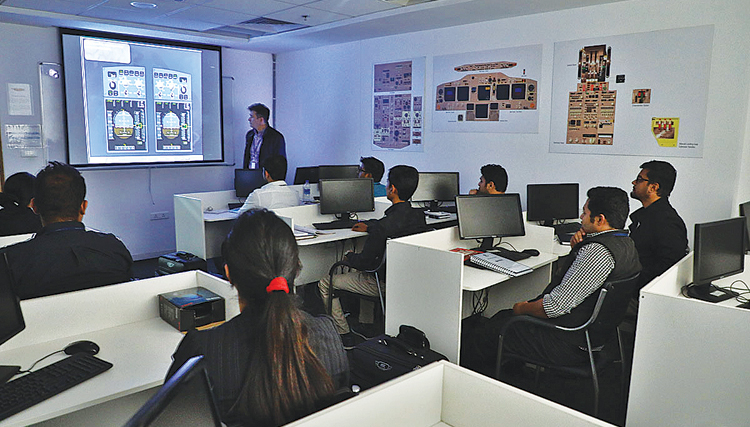
BAA Training offers a range of pilot training options, including modular, integrated, and MPL programmes. However, recognising the unique needs of the Indian market, the organisation developed a dedicated cadet programme. The program includes obtaining a Private Pilot License (PPL) and progresses to EASAapproved CPL training in Lithuania or Spain, followed by DGCA licensing requirements in India and type rating for aircraft such as the A320 or B737 in locations like Lithuania, Spain, Vietnam, or India. Graduates emerge with dual EASA-DGCA certification, enhancing their employability in the EU and beyond.
BAA Training prioritises quality, offering a 1:5 instructor-to-student ratio and training on advanced Cessna 172S aircraft. The curriculum exceeds regulatory requirements, providing four times the mandated theory hours. BAA Training has also invested in its own maintenance facilities and expanded its fleet. The organisation also supports students by helping them secure financial assistance, including bank loans, to cover training costs.
REDBIRD ACADEMY
Redbird Flight Training Academy, founded in 2017, is India’s largest flight training organisation, offering DGCA-approved Commercial Pilot Licence (CPL) training. Within a short span, the academy has expanded to a fleet of over 49 aircraft, including Cessna and Tecnam models. Operating from five Indian bases and a new international base in Colombo, Sri Lanka, Redbird provides comprehensive training facilities. The academy plans to further enhance its fleet, ensuring state-of-the-art education. Its focus on producing industry-ready pilots has made it a prominent name in aviation training, offering aspiring cadets a robust foundation for their careers in aviation.
AIR INDIA ORDERS 34 TRAINER AIRCRAFT FOR ITS FLYING SCHOOL
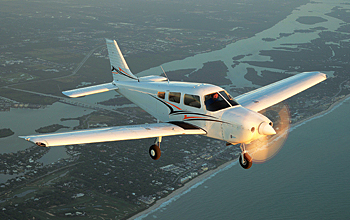
Air India has placed an order for 34 trainer aircraft as it prepares to start training of cadet pilots at South Asia’s largest Flying Training Organisation (FTO) coming up in Amravati, Maharashtra by the second half of 2025, post regulatory approvals. The order includes 31 single-engine aircraft from Piper Aircraft in the United States and 3 twin-engine aircraft from Diamond Aircraft in Austria. The FTO is a leap forward in Air India’s commitment to bolster its training infrastructure as part of its Vihaan.AI transformation program and cultivate a pipeline of pilots as it expands its fleet, becoming self-reliant. The trainer aircraft, due for delivery starting 2025, are equipped with glass cockpits, G1000 avionics systems and Jet A1 engines that will ensure advanced training for aspiring pilots.
The FTO is coming up at Amravati’s Belora airport and will target to graduate 180 commercial pilots every year. As part of its commitment to invest in aviation training, Air India opened its new Aviation Training Academy, spread over 6,00,000 sq ft, the largest in South Asia, in Gurugram. It is also the first airline in India to announce the setting up of an FTO that will complement Air India’s commitment to power India’s aviation ecosystem in the coming years. At the FTO in Amravati, Air India is developing a state-of-the-art training institute over 10 acres, with digitally enabled classrooms at par with global academies, hostels, a digitised operations centre, and its own maintenance facility to elevate operational efficiency. The FTO is curated to deliver best-in-class training with high safety standards.
FACTORS TO EVALUATE WHEN SELECTING A PILOT ACADEMY
Choosing the right flight school in India is a pivotal step in shaping your career as a pilot. A thoughtful evaluation of several critical factors can ensure you make an informed decision, laying the foundation for success in the aviation field.
- Comprehensive Training Programmes: The quality and structure of the training programme offered by a flight academy are fundamental. A robust curriculum that integrates both theoretical and practical components is essential for developing the necessary skills and knowledge. Prospective students should seek academies with syllabi that comprehensively address subjects such as navigation, meteorology, air regulations, and aircraft systems.
- Ground School Instruction: This phase imparts theoretical knowledge, forming the backbone of pilot training.
- Simulator Training: Advanced simulators offer a controlled environment for mastering flight techniques, enabling students to practice complex scenarios safely.
- Hands-on Flight Training: Practical sessions with seasoned instructors are crucial for gaining confidence and competence in real-world flying conditions.
- Expertise of Instructors: The proficiency and experience of an academy’s instructors significantly influence the quality of training. Accomplished instructors not only teach technical skills but also act as mentors, guiding students through their learning journey. When researching academies, investigate the qualifications and flight experience of the faculty.
- Facilities and Resources: Modern infrastructure and advanced resources enhance the overall learning experience. Look for academies equipped with:
- State-of-the-Art Classrooms: Interactive, technologydriven classrooms can make theoretical lessons more engaging.
- Advanced Flight Simulators: High-quality simulators replicate real-world flight scenarios, allowing trainees to build skills in a risk-free setting.
- Well-Maintained Aircraft Fleet: Access to a variety of aircraft models ensures students gain diverse flying experience, preparing them for various operational conditions.
Equally important is the programme’s adherence to the standards established by the Directorate General of Civil Aviation (DGCA), ensuring compliance with national safety and quality guidelines. An ideal training programme includes key phases such as:
A curriculum that balances these elements will provide students with the expertise needed to succeed in aviation.
Reputable academies often employ instructors with substantial flying hours and a background in teaching. Beyond delivering lessons, these mentors offer valuable insights from their careers, foster confidence, and help students navigate challenges. Their guidance can be instrumental in shaping well-rounded and competent pilots.
Exposure to different aircraft types and cutting-edge equipment equips students with the versatility and adaptability required in professional aviation. Selecting a pilot academy with a well-structured curriculum, experienced instructors, and modern facilities is crucial for a successful start in aviation. By carefully considering these factors, aspiring pilots can ensure they receive top-notch training, preparing them to meet the challenges of a dynamic and demanding industry.
CONCLUSION
The institutions highlighted above represent some of the best flight schools in India—each offering unique strengths that cater to different needs. Whether you choose IGRUA for its esteemed reputation or NFTI for its industry connections, you’ll be taking an essential step toward achieving your dream of becoming a qualified pilot. As you embark on this aviation journey, remember that your choice of school can significantly impact your options for pilot jobs in India. With dedication and hard work at one of these top pilot schools in India, you can look forward to a rewarding career filled with opportunities as you soar through the skies. By investing time into finding the right fit among these esteemed institutions—whether through rigorous academic preparation or practical experience—you’ll be well-equipped with technical skills and confidence as you prepare yourself for future challenges within this dynamic field known as aviation!




